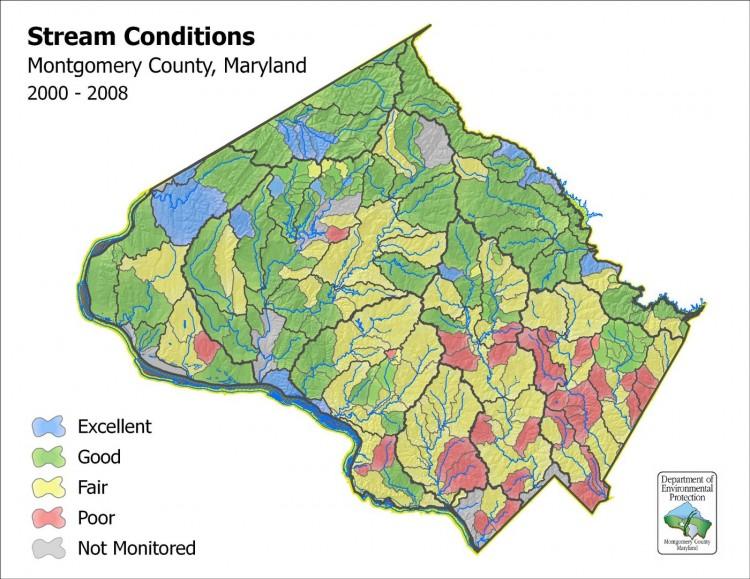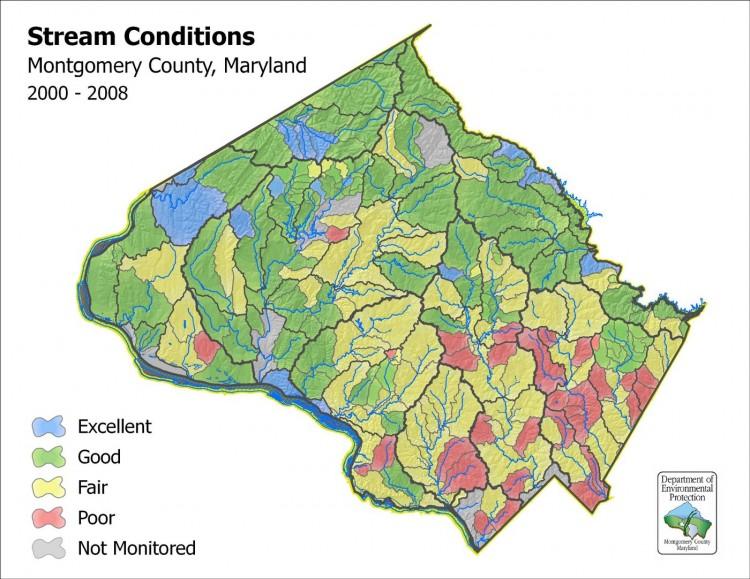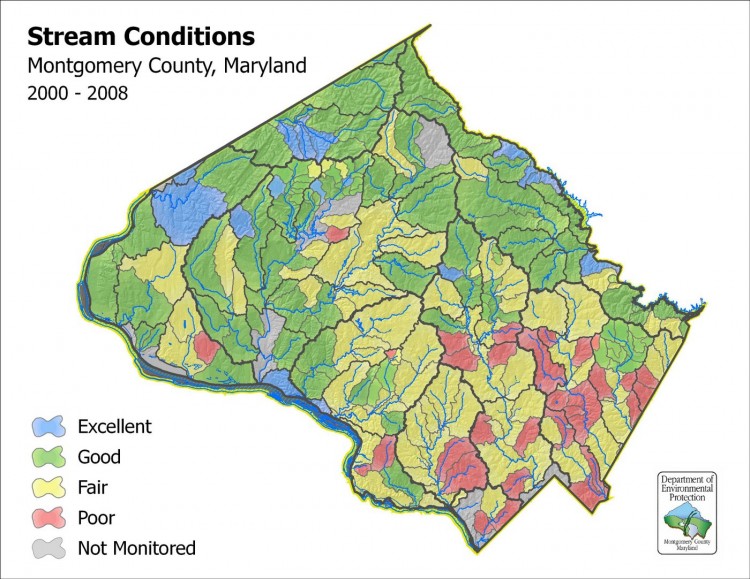In Montgomery County, many streams are in an unhealthy state due to urban runoff, soil erosion, and stream channels and banks that have lost their structural integrity. Trash and pollutants have aggravated the problem.
Residents of Montgomery County gathered for the Montgomery County H2O summit in Gaithersburg on March 16 to learn and discuss what can be done to restore the streams and creeks. Participants familiar with the state of the county’s creeks heard from the staff of the Montgomery County Department of Environmental Protection (MCDEP) regarding the state of the local creeks that feed into the Potomac River and the Patuxent River—the source of drinking water for Montgomery County.
Workshops were conducted on how communities can work collectively to safeguard their watershed to ensure clean streams. They learned what the local government is doing about stormwater, and about measures people can take at home so that their stormwater runoff is clean before it enters a storm drain or flows into the streams in their watershed.
What is a Watershed?
A watershed is the area where water above and below the ground drains into a local stream, river, bay, lake, or ocean, according to the MCDEP website. Montgomery County has created a watershed map, with lines drawn surrounding the highest level of elevation surrounding a particular creek or river. The Rock Creek watershed consists of the area where streams drain into Rock Creek. It is part of the Potomac River watershed as Rock Creek flows into the Potomac River. The Potomac River watershed belongs to the Chesapeake Bay watershed because the river flows into the Chesapeake Bay.
“The idea is that wherever you live, you join that creek group, and we help each other. We have less natural ways for the water to become clean. We have to do it ourselves,” said Ann Smith, a Seneca Creek watershed volunteer. “I walk in the creeks twice a week… You feel the time when you’re down there,” continued Smith who said that her cat walks along the edge of creek with her.
Runoff, Pollutants, and Restoration
Pollutants in stormwater that runs off of houses, roads and other impervious sources, pet waste left on the ground, and leaking automotive fluids are some of the contaminants to local creeks, according to MCDEP.
In urban areas where streams have been paved over, underground pipes carry water out to natural waterways through the Municipal Separate Storm Sewer System (MS4). When it rains heavily, stormwater flows off of streets and parking lots into the pipes that release it into creeks at a high velocity causing erosion and other damage.
“The core of our restoration approach is to better manage and prevent the uncontrolled runoff from urban surfaces, pavements, roads and parking lots, by controlling the volume of runoff that enters the stream. And by controlling trash and pollutants from flowing into the stream, we can protect the structure of the stream channel so that it can start to function like a healthy stream system and biological life can return,” said Bob Hoyt, director of MCDEP in a video posted online.
To reduce stormwater runoff, Montgomery County has a RainScapes Rewards program that offers Montgomery Country residents and businesses up to $1,200 in rebates for residential rainscaping improvements to reduce storm-water runoff, and up to $5,000 for commercial, multifamily, and institutional properties. Rebates are offered to be applied for the cost of project work. With the RainScapes Awards rebate, home owners can replace a traditional lawn with a native plant garden, replace an asphalt driveway with a permeable paver that allows water to seep through to the ground, or install a rain barrel to collect and store rain water for future use.
“There are parts [of Montgomery County] where we want 30 percent of the community to install rain-gardens,” said Ryan Zerbe, MCDEP Watershed Outreach Planner.
State and local transportation authorities are responsible for maintaining stormwater systems along streets, roads, and highways by managing the quality and quantity of stormwater discharging to waters via those systems, according to the United States Environmental Protection Agency (EPA).
The RainScapes Program and the Montgomery County Department of Environmental Protection will host a Rain Barrel Workshop on Friday, April 13, 2013, and Saturday April 14, where they will provide a free 55 gallon rain barrel and show home owners how to install them.
Montgomery County reports on the state of each of the watershed, which are monitored through a process of biological sampling and wild life observation, according Kevin Van Ness, aquatic biologist supervisor with MCDEP.
Watershed groups like the Friends of Sligo Creek, monitor and remove invasive plants, pick up litter and test water quality. The streams in Montgomery County used to power the county’s railroads, and support the tobacco, wheat, and corn crops that were the main agricultural crops grown on the lands between 1688 and 1840, according to Van Ness. Following periods of urbanization in the 1950s, by the 1970s aging infrastructure created conditions for Montgomery County’s creeks to be damaged.
MCDEP recommends that home owners in Montgomery County reduce litter, not use pesticides or fertilizers on lawns, recycle grass clippings on their lawns, and RainScape or volunteer with their local watershed group.
Local companies like A.I.R. Lawn Care, an environmentally friendly lawn care company, offers basic landscaping, fall and spring cleanups with plans to offer rain water installations to Montgomery County residents, while Maryland Master Gardeners, University of Maryland Extension, answers plant and gardening questions during their Walk-in plant clinics at libraries and markets throughout the county.




